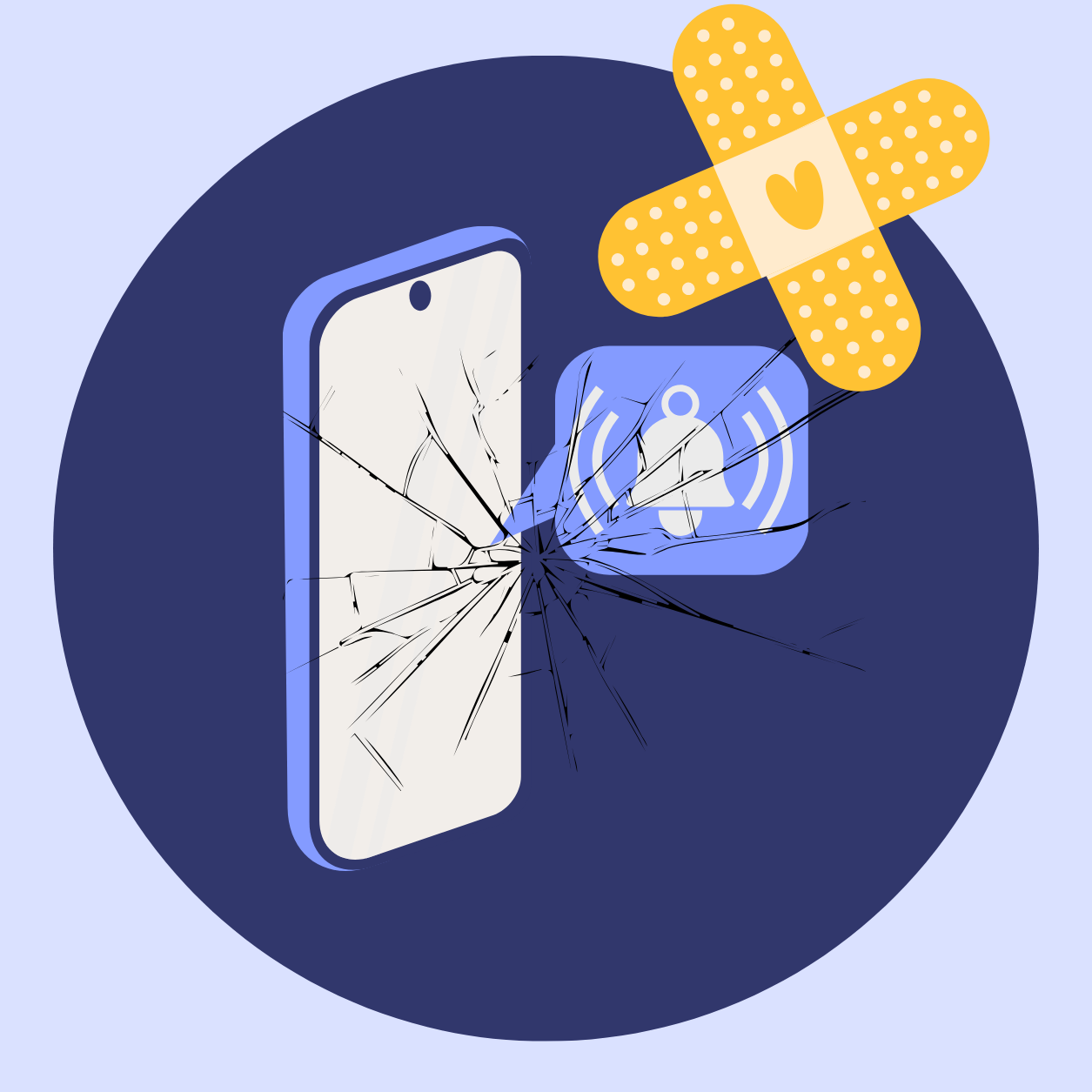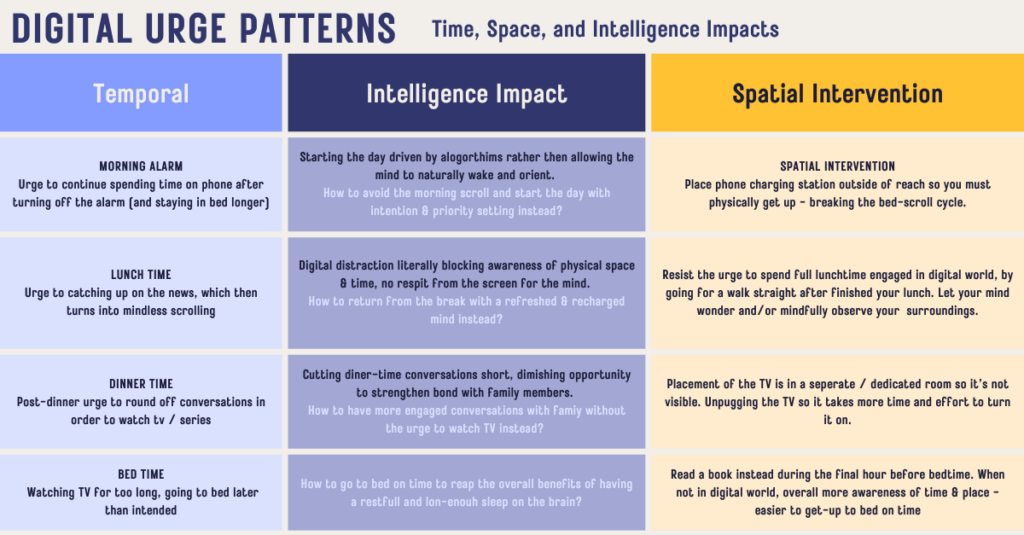
Place as a Digital Antidote
Could place become the antidote to our never-ending urge to be immersed in the digital sphere? When I undertook the 100-day digital detox last year, I kept a diary with observations and reflections of my digital cravings. As a human geographer and workplace strategist, I was driven by two key questions: As I was diarising […]
Could place become the antidote to our never-ending urge to be immersed in the digital sphere?
When I undertook the 100-day digital detox last year, I kept a diary with observations and reflections of my digital cravings. As a human geographer and workplace strategist, I was driven by two key questions:
- Firstly, I wanted to understand, why as knowledge workers, do we feel compelled to continue being immersed in the digital world during our leisure time, when most of our workdays already consists of interfacing with screens?
- Secondly, I hypothesised that knowledge workers’ emotional & cognitive intelligence could be negatively affected by excessive time spent in virtual spaces, thereby impacting organisational outcomes.
As I was diarising my experiment experiences, I noticed that some patterns started to emerge. Patterns around the digital urges that involve time, intelligence, and space.
Spatial Solutions to Virtual Habits
Time & Space
Going into the experiment, I had thought that reducing screen time would naturally lead to a fuller experience of physical place. However, what I discovered was that, place itself had emerged to become a mechanism for managing digital behaviour – literally creating space between myself and the digital urges.
For example, during the first few weeks of the experiment, I noticed a strong urge to continue spending time on my phone in the mornings, after turning off the alarm (and stay in bed longer). I made it easier for myself to cope with this trigger, by placing the phone across the room instead of besides my bed. That way, the automatic reaching for the phone & scrolling was disrupted, and it became easier to start the day in the physical world, and less triggering to remain in bed and mindlessly scroll. The geographical aspect of this intervention made me not only aware of experiencing place more consciously, but also presented to me the importance of place in the digital age – it can be a useful intervention tool!

Intelligence
Now let’s look at the intelligence part. Through my experiment, I observed that digital urges frequently interrupted my cognitive flow and opportunities for emotional and social connection. For example, the urge to cutting diner-time conversations short in order to watch a series (see more example in ‘intelligence’ column in table above). In the table you can also see that each spatial intervention demonstrates how place could act as an “antidote”.
The key insight here is that these spatial interventions don’t just reduce digital usage – they actively enhance both cognitive and emotional intelligence:
- Promoting mindful decision-making over reactive behaviors (independent thinking vs algorithmic-driven)
- Creating opportunities for deeper human connections
- Enhances focus for improved cognitive performance
- Optimises cognitive function through better sleep quality
It could be argued that through spatial interventions, we could potentially improve our overall performance – it can function as an antidote for virtual brain drain. So then, the role of place, is to help knowledge workers thrive in the digital age!
The Real Power of Place
These findings suggest that the answer to “Is there still place for place?” is a resounding yes – but perhaps not in the way we initially imagined. Instead of trying to make physical space compete with the digital realm, we could use it as a strategic tool to enhance our relationship with technology. Rather than fighting digital habits with willpower alone, physical place becomes an environmental ally in digital wellness.
Naturally, these are just my own autoethnographic observations over a 100-day experiment. However, this does beg an empirical study to answer the question that asks whether leveraging the power of place can create more intentional relationships with our digital tools, potentially leading to improved cognitive function and emotional well-being in both professional and personal contexts.
Until that time, I’d be really keen to know, how is your physical and digital workplace relationship affecting your sense of belonging, your wellness, and your productivity? Have you identified any up- or downsides of reduced screen-time on your emotional & cognitive performance at work?
Feb 9, 2025
Tica Masuku
|
[🎤Are you looking for a keynote speaker for your next event, company off-site or global summit? I'm currently organising my international speaking calendar for 2025. Please get in touch to discuss the possibilities tica.m@spaceful.com.au]
[💡Would you like to know how I can help you or your organisation apply a human geography informed strategy to your workplace? I'm the Director of Workplace Strategy at Spaceful. We assist organisations design and develop bespoke and evidence-based workplace strategy solutions. You can email me at tica.m@spaceful.com.au]
You'll get...
Thank You for Subscribing!
Website designed by Creative Vibes
2025 © Copyright Tica Masuku